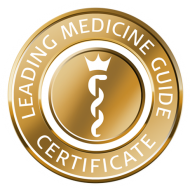Was unsere Patienten sagen
Lachs küsst Avocado-Lachs-Tarte und Orangen-Dill-Senfsauce
Lachs und Avocado sind wahre Omega 3 Helden. Dieses Rezept schmeckt nicht nur gut, es deckt auch Ihren Tagesbedarf an gesunden Fettsäuren zur Unterstützung Ihrer Fruchtbarkeit!Was braucht ihr:
- 2 Scheiben frisches Lachsfilet
- 1 Packung Lachs in dünnen Scheiben
- 1 Thymianzweigchen
- 1 Zweigchen Dille
- 2-3 Knoblauchzehen
- 1/2 Zitrone und Saft
- 3 EL Olivenöl
- Bisschen Petersilie
- 1 Avocado
- 2 Stangen vom Jungzwiebel
- Salz und Pfeffer
- 2 EL Honigsenf
- 1 EL Honig
- 4 EL Orangensaft
- 2 EL Pinienkerne
https://www.instagram.com/nellas_food/
DDr. Feichtinger vollbringt Wunder
Nach über 10 Jahren vergeblichen Versuchen schwanger zu werden, hat uns Herr DDr. Feichtinger dabei unterstützt, unseren sehnlichsten Wunsch zu erfüllen. Wir sind ihm und seinem Team unendlich dankbar und können ihn nur wärmstens weiterempfehlen.Ein herzliches Dankeschön dem gesamten Team!
Wir haben uns bei Ihnen sehr wohl gefühlt. Nach wenigen Versuchen ist unser Sohn F. zur Welt gekommen. Viele Grüße Fam. PKinderwunschexperte Priv.-Doz. DDr. Michael Feichtinger zu den besten Ärzten des Jahres ausgezeichnet
Der renommierte Gynäkologe und Reproduktionsmediziner Priv.-Doz. DDr. Michael Feichtinger wurde in diesem Jahr zum dritten Mal in Folge zu den besten Gynäkologen des Jahres gewählt. Die Auszeichnung wurde von drei unabhängigen Medien verliehen: Docfinder, der Tageszeitung Österreich und dem Kurier.DDr. Michael Feichtinger ist seit vielen Jahren auf die Behandlung von unerfülltem Kinderwunsch spezialisiert und leitet seit 2018 das Wunschbaby Institut Feichtinger. Hier betreut er Paare, die sich sehnlichst ein Kind wünschen und dafür medizinische Unterstützung benötigen. Mit modernsten Methoden und viel Einfühlungsvermögen gelingt es ihm und seinem Team immer wieder, auch schwierige Fälle erfolgreich zu behandeln.Viele seiner Patientinnen schätzen besonders seine ruhige und vertrauensvolle Art, mit der er ihnen in schwierigen Situationen zur Seite steht.DDr. Feichtinger ist bei der Bewertungsplattform Docfinder mit fast 100- prozentiger Zufriedenheit bei den Bewertungen angeführt und bekommt laufend positive Feedbacks wie etwa die Beispiele zeigen„Top kompetentes Team, super familiäre Atmosphäre. Wir hätten uns keine bessere Betreuung vorstellen können, angefangen bei Dr. Feichtinger und vorallem vom gesamten Team. Top Top!“„Herr Dr. Feichtinger ist einer der besten Ärzte, die ich kennengelernt habe. Ich hatte davor in einer anderen Klinik 3 IVF-Versuche, die nicht geklappt haben. Beim WIF bin ich im 1. Zyklus schwanger geblieben. Kann ich nur weiterempfehlen.“Die Auszeichnungen zu den besten Gynäkologen des Jahres sind für DDr. Feichtinger eine Bestätigung seiner Arbeit und seines Engagements für die Gesundheit von Frauen und Paaren. Gleichzeitig sieht er sie aber auch als Ansporn, sich weiterhin für seine Patientinnen und Patienten einzusetzen und stets auf dem neuesten Stand der medizinischen Forschung und Technik zu bleiben.Wer sich für eine Behandlung bei DDr. Feichtinger und seinem Team interessiert, kann sich hier auf der WIF Website einen Termin vereinbaren und findet auch weitere Informationen zu den Behandlungsmethoden und dem umfangreichen Serviceangebot des Instituts.Wir gratulieren DDr. Michael Feichtinger herzlich zu seiner Auszeichnung und wünschen ihm und seinem Team alles Gute für die Zukunft!Liebes Wunschbaby Team!
Ohne euch wäre unser größter Wunsch nie in Erfüllung gegangen. Mit M. hat sich unser größter Traum erfüllt und dafür möchten wir uns ganz herzlich bei euch allen bedanken. Bestimmt sehen wir uns in ein paar Jahren wieder.
Ganz liebe Grüße von der glücklichsten kleinen Familie der Welt!
S., M. und M.Lesen Sie mehr

Assisted Hatching
The egg cell and the early embryo are surrounded by the zona pellucida (a protein-containing membrane), which is approximately 0.1 μm (1/100 mm) thick. “Embryo-hatching", the process in which the embryo “hatches” out of the zona pellucida, is a necessary step for the embryo to be able to properly implant itself in the endometrium.
Depending on age, or in patients with various illnesses (such as endometriosis) and in cryopreserved embryos, this membrane can be hardened and thus—despite potentially adequate embryo quality – can prevent pregnancy from occurring.
After the use of different "hatching aid" techniques (such as mechanical or acid etching), a laser is used for the actual hatching process. The laser pulse is placed directly under the microscope at the desired segment of the zona pellucida. The laser pulse "carves" into the zona pellucida, which should lead to a better "adhesion" of the embryo to the uterine lining and thus increase the chance of pregnancy. This method is non-invasive and requires no “hands-on” time, which means that contamination is prevented and is therefore harmless for the genetic composition of the embryo.
- Overview
- IVF
- IVF in 10 steps
- Cause of miscarriages
- Assisted-Hatching
- Chipsi
- Application of Seminal Plasma
- Egg cell donation
- Genetics
- Testicular puncture
- Insemination
- ICSI
- Fertility treatment in same-sex couples
- The dream to have children despite cancer
- Complementary Medicine
- Cryopreservation
- Male Infertility
- PICSI
- Psychotherapeutic support
- Sperm and egg cell donations
- Social Freezing



































